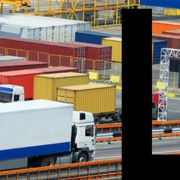Improving Distribution Efficiency with ERP
Enterprise Resource Planning is predominately associated with manufacturing, but that’s not the beginning and end of its management talents. Distribution too, whether in house or 3PL can benefit from the implementation of ERP. ERP did, of course, cut its teeth in the manufacturing industry, as MRP, so the close association is understandable. However, ERP is more than just manufacturing. The entire supply chain is serviced by ERP; from the logistics of getting the materials in, to the distribution of the finished product, ERP is oiling all the cogs in the machine. Many of the challenges faced across the supply-chain overlap; tracking items and inventory, labelling and coding, and managing ongoing operating costs are as much a part of logistics and distribution as they are manufacturing. An ERP solution, which tracks all aspect of operations and helps manage the entire business processes, is a commodity for all within the supply-chain – not just the manufacturer.
Streamlining the Distribution Process
An increasing number of distributors, both part of a manufacturing firm and independent 3PL, are turning to ERP to streamline their operations. With supply chains expanding and becoming more complex, these businesses need software that supports both the production and distribution processes, and also has the flexibility and depth of support needed to meet their changing needs.
In previous generations all the R&D effort went into manufacturing; we spent months reducing production lead times from 2 days to 12 hours, but neglected the fact that it took a further 6 months to get the product to the end user. In the days of internet and instantaneous gratification, businesses can’t afford to do that anymore. Three ways some of our customers are utilising ERP to streamline processes and to speed up deliveries are:
Building the distribution requirements into the product design
This allows you to deliver a customised offering to the customer, at mass produced efficiency. Don’t just think about product functionality; think about the whole supply-chain. Then think about how your ERP can deliver the business process you need in order to support your desired model.
Analysing What You Already Know
Use a tool like QlikView to harness the “big data” within your ERP. What are your customers buying? Where are they buying from? Listen to your internal and external sales people: how do customers want to place an order? How do they want to receive product?
Using SYSPRO to Build an Integrated Nexus
EDI, xml, web integration are all easily facilitated with our K3 DataSwitch tool, enabling customers to create efficiency within the supply chain and be responsive to changing demands.
Real-time Responses to Customer Requirements
Those that can respond to customers’ changing requirements are the one’s staying ahead. With many firms competing in the market place, winning and retaining customers is becoming far more difficult for distributing and 3PL firms. Working in partnership with your customers, helping their operations run smoothly and efficiently is key and your part of the link in the supply-chain is ensuring that goods are moved, whether it’s to support your customer’s manufacturing operations by bringing all parts together or by running the logistics to end customers, full traceability of consignments is essential and with that, the ability to track stock at any time.
What Can ERP Offer?
Labelling and barcoding become part of the process with scanning technology linked to a system that can identify the item, customer and price in just one swipe and information and analysis can be obtained at any time from the warehouse.
ERP allows distributors to instantly track the DNA of any item, at any time, to ensure that a customer knows exactly where their goods are. And the most effective ERP solution will be able to seamlessly integrate with complementary software that further enhances the customers’ processes.








Leave a Reply
Want to join the discussion?Feel free to contribute!